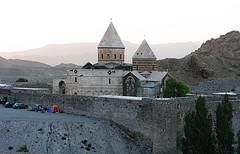Progress
Monday, December 4th, 2017Selfish desire to evolve only in man, whereas in all other parts of creation (Still, vegetative, animal) is unchanged. It is increasing desire to obtain new pleasures and finding ways to meet them and determine the level of civilization and all that we call a word "Progress." Due to the fact that we are constantly growing desire, humanity is moving forward. Selfishness develops along the time axis is gradually and continually: it increases quantitatively, and with the growth becomes qualitatively different desires. Macro-anthropology shared by the entire complex of human desires into five levels, each of which develops is a kind of pleasure: 1. primary desire – physical (food, shelter, procreation), 2. desire for wealth, 3.
the desire for honor, power and glory; 4. thirst for knowledge, 5. spiritual level – the desire to comprehend the meaning of life, the concept of creation. These levels are consistently appear in person for thousands of years to form stage of human development. Primary desires are also called "animal desires", as they are inherent and animals.
Even in isolation, a person experiences hunger and sexual desire. Desire wealth, power and knowledge – it is "human desires", as there are under the influence of social environment, and to meet them one must be with their own kind, that allows you to create classes and various hierarchical structure. In light of the concept review of such areas of human activity, such as culture, education, science and technology, leads us to conclude that it is developing in a person selfishness spawned all of our ideas, inventions and innovations.
 From the new forms of social organization, the vision of the society divided in three invariant orders passed to be questioned, sanctions as well as it social left exclusively of being decurrent of the land ownership. The money accumulation (capital), it started to be seen as a form of social asceno (seed of the Capitalism). It was appearing a new set of values, beliefs and traditions called for the historians of Modern Mentality. In the field, considering the custosa and little productive servitude very, had looked for to you to breach with contracts of obligator service and had organized a mixing system with wage-earners and free arrecandatarios, that second its vision produced more. However, exactly with the alterations in the production system many times the amount of foods was not enough for the population, generating increase of the prices and hunger.
From the new forms of social organization, the vision of the society divided in three invariant orders passed to be questioned, sanctions as well as it social left exclusively of being decurrent of the land ownership. The money accumulation (capital), it started to be seen as a form of social asceno (seed of the Capitalism). It was appearing a new set of values, beliefs and traditions called for the historians of Modern Mentality. In the field, considering the custosa and little productive servitude very, had looked for to you to breach with contracts of obligator service and had organized a mixing system with wage-earners and free arrecandatarios, that second its vision produced more. However, exactly with the alterations in the production system many times the amount of foods was not enough for the population, generating increase of the prices and hunger.  With twenty years last five hundred cooperative warehouses existed more than, being then created ' ' Great Association of Manchester for sales in atacado' ' , with the pioneers of Rochdale, representing an important consuming market and starting to have great influences social and politics. Being also responsible for the foundation of some cooperatives of production in other areas. The Cooperativismo in Brazil Analyzing Brazil of middle of century XIX, when great changes occurred in the old world and from now on the system Brazilian economic partner starts to be questioned, the main generating force of wealth in Brazilian soil, starts to receive critical. country adheres to the liberal chains influenced by the Europe, that are each stronger time in function of the estruturao of the capitalism, entering in contradiction when allowing enslaved work in its territory, such situation generated a serious problem for Emperor D. Peter II to manage. Brazil suffered great pressure on the part from England that interested in extending the consumption of its products, enxergavam in the consuming potential captives, in case that they started to receive wages.
With twenty years last five hundred cooperative warehouses existed more than, being then created ' ' Great Association of Manchester for sales in atacado' ' , with the pioneers of Rochdale, representing an important consuming market and starting to have great influences social and politics. Being also responsible for the foundation of some cooperatives of production in other areas. The Cooperativismo in Brazil Analyzing Brazil of middle of century XIX, when great changes occurred in the old world and from now on the system Brazilian economic partner starts to be questioned, the main generating force of wealth in Brazilian soil, starts to receive critical. country adheres to the liberal chains influenced by the Europe, that are each stronger time in function of the estruturao of the capitalism, entering in contradiction when allowing enslaved work in its territory, such situation generated a serious problem for Emperor D. Peter II to manage. Brazil suffered great pressure on the part from England that interested in extending the consumption of its products, enxergavam in the consuming potential captives, in case that they started to receive wages.